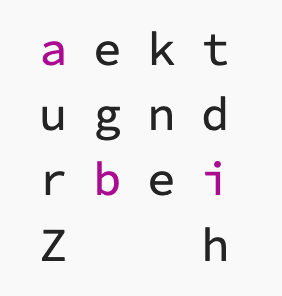The ÜBCHI Cipher

The ÜBCHI Cipher
Within World War I, the Germans used a double-columnar transposition cipher called Übchi. It is a columnar transposition cipher, and uses a double columnar transposition.
With the Ubchi cipher, we determine the number of characters in a key and use this to define a number of column. Then we layout the plaintext into these columns, and then order the columns in an alphabet may defined by the keys. Next, we read the ciphertext back by reading the columns from left to right. Next, we add a random character to the end. Finally, we layout the columns again, and perform an ordering with the key, and read back for the ciphertext. It is similar to a cipher used by the US Army in World War 1, but adds a random character between two column transposition rounds.
If we have a message of “edinburgh” and a key of “take”. We first take the key and arrange the plaintext into the number of columns defined by the key:

Now we will arrange the key in alphabet order:

New message is:

We now add a random letter. In this case, we add ‘Z’:

We now go through another columnar transposition:

We then reorder again to give:

We can then read out over the columns from left to right. The final cipher is:

Here is the coding of the cipher:
https://asecuritysite.com/ctf/ctf_ubchi
And, so, how secure is it? Well, it all depends on the strength of the key used.